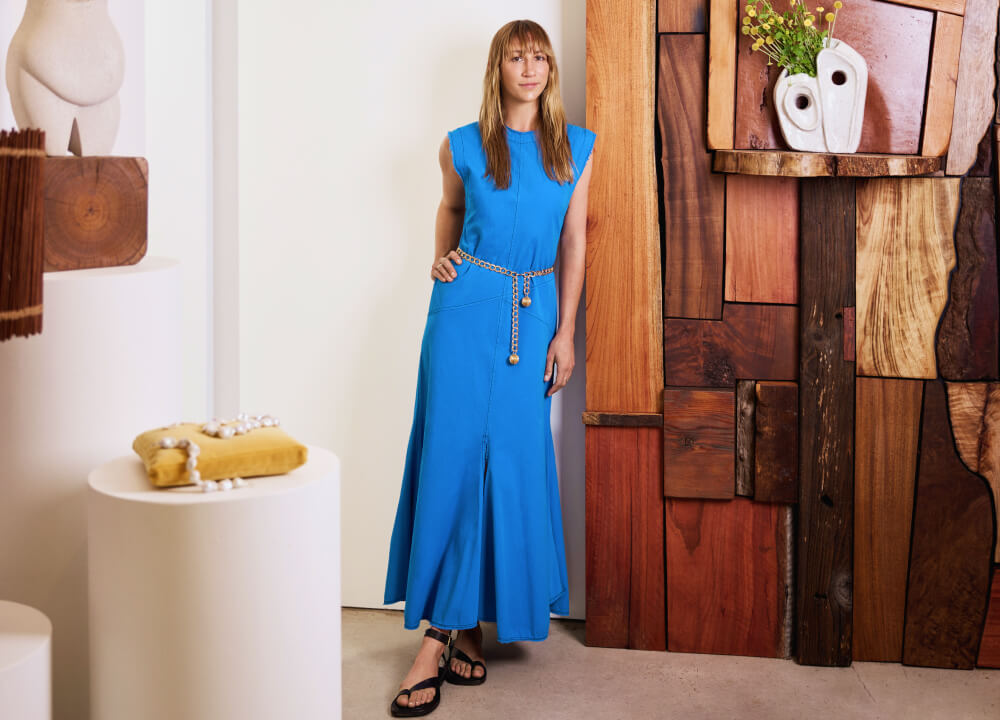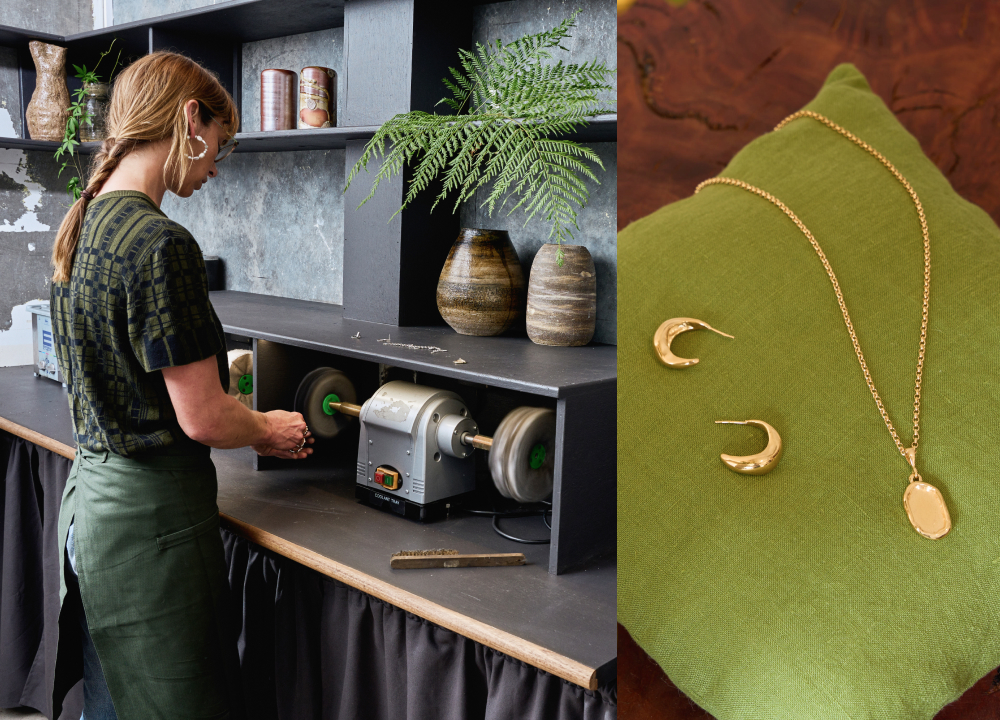
Holly Ryan Jewellery goes beyond being just a label as it embodies a sustainable philosophy that motivates. In 2010, Holly established Holly Ryan Jewellery intending to challenge the fashion industry’s excessive production and wastage. Each piece is meticulously handcrafted on Gubbi Gubbi Country (Sunshine Coast) by Holly and a team of proficient artisans, using recycled and ethically sourced materials that retain their worth. Holly has always drawn inspiration from the circular design of jewellery, and this remains the principal motivation behind Holly Ryan Jewellery’s dedication to sustainability.
Holly is no stranger to getting out in nature. “I was brought up on the side of a mountain, overlooking the ocean. I climbed the mountain a few times a week and spent time in the ocean every day. It instilled in me a natural appreciation for the imperfect beauty of nature and the environment, which led to conscious decisions about how to run my business from the get-go,” she says. After studying fashion design at the Queensland University of Technology, Holly discovered the huge amount of waste and the industry’s environmental impact. Paired with an already deep connection with nature, she turned to work with precious metals as they can always be reused and recycled.
“I’ve used recycled metals in my work since the brand’s inception in 2010 and over the years, I’ve worked tirelessly to find and generate various methods for producing using a circular model,” Holly explains. Holly Ryan Jewellery sources its metals through its recycling initiative, where metals are refined and reused and supplied by customers from their previous Holly Ryan pieces. “In the workshop, we keep all metal scrap and dust from each piece, which is swept up at the end of each day for refining. We also use a trusted Australian family business for any additional casting, who locally source and refine our metals for us,” she says.
Holly expresses a noticeable increase in customers wanting to repurpose their unworn heirloom jewellery or pieces that no longer fit their style through her recycling initiative. The trend has become more prevalent in the past few years, with many people bringing in items that have been sitting unused and gathering dust. “There’s something special and satisfying about reusing a sentimental heirloom gemstone or reworking a vintage piece into something new,” she says.

“We also offer store credits towards any of our designs if a customer no longer wears a piece and simply wants us to melt it down and reuse the metal in future. Customers who purchase our jewellery, or any precious jewellery, can always be assured that what they are buying has a value that really only increases as the cost of metals [does] over time,” she adds.
Holly’s parents’ studies in silversmithing in Mexico are also an inspiration for her to create beauty without waste as she witnessed the environmental impacts first-hand. “[Sustainability has] always been at the heart of what I stand for, and though there is definitely a ‘greenwashing’ bandwagon that exists today, the climate crisis is real and we all need to do our part, more urgently than ever, to reduce, reuse and recycle,” Holly explains.
“Transparency is also key. Our customers want to know where our supplies are coming from, and be confident in our processes. That’s why our Noosa workshop has a large window that you can look through to the workshop and see for yourself that we hand-make each piece of jewellery, right here in Australia. Nothing goes to waste,” she adds.
Holly Ryan Jewellery has transitioned to a made-to-order production model over the years. This approach not only makes financial sense but also aligns with the brand’s commitment to creating what is necessary and avoiding the accumulation of excess stock. Remaining true to its sustainable ethos hasn’t gone without its challenges, but it’s something Holly believes in wholeheartedly. “Jewellery is amazing in that if you use precious metals and materials like we do, there’s no piece that can’t be repaired, replated, re-strung or repurposed. Nothing will end up in landfill and every purchase is a responsible [and] conscious one,” she says.
Holly advises those looking to improve their sustainable practices in the industry to implement several key strategies. She lists the questions for jewellery industry professionals to ask themselves. “Look at your business model. Are you producing sensibly or over-producing to stay relevant? Can you move to a pre-order model? Recycle and reuse. Ask yourself, what you have that is already existing and how this can be reused?… Ignore the greenwashing and focus internally on what you can do. That’s how we will make the biggest difference as a collective,” she says.
Further reading: